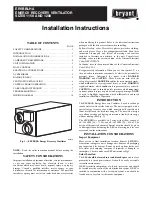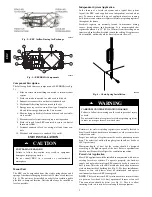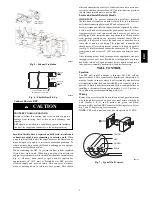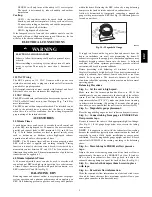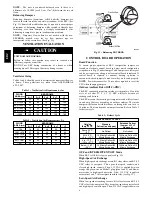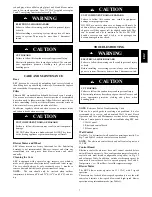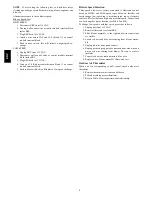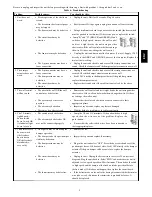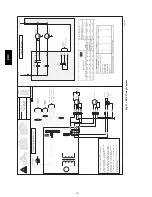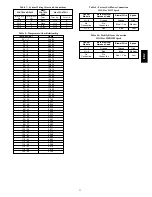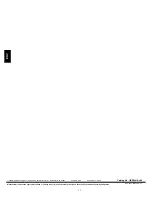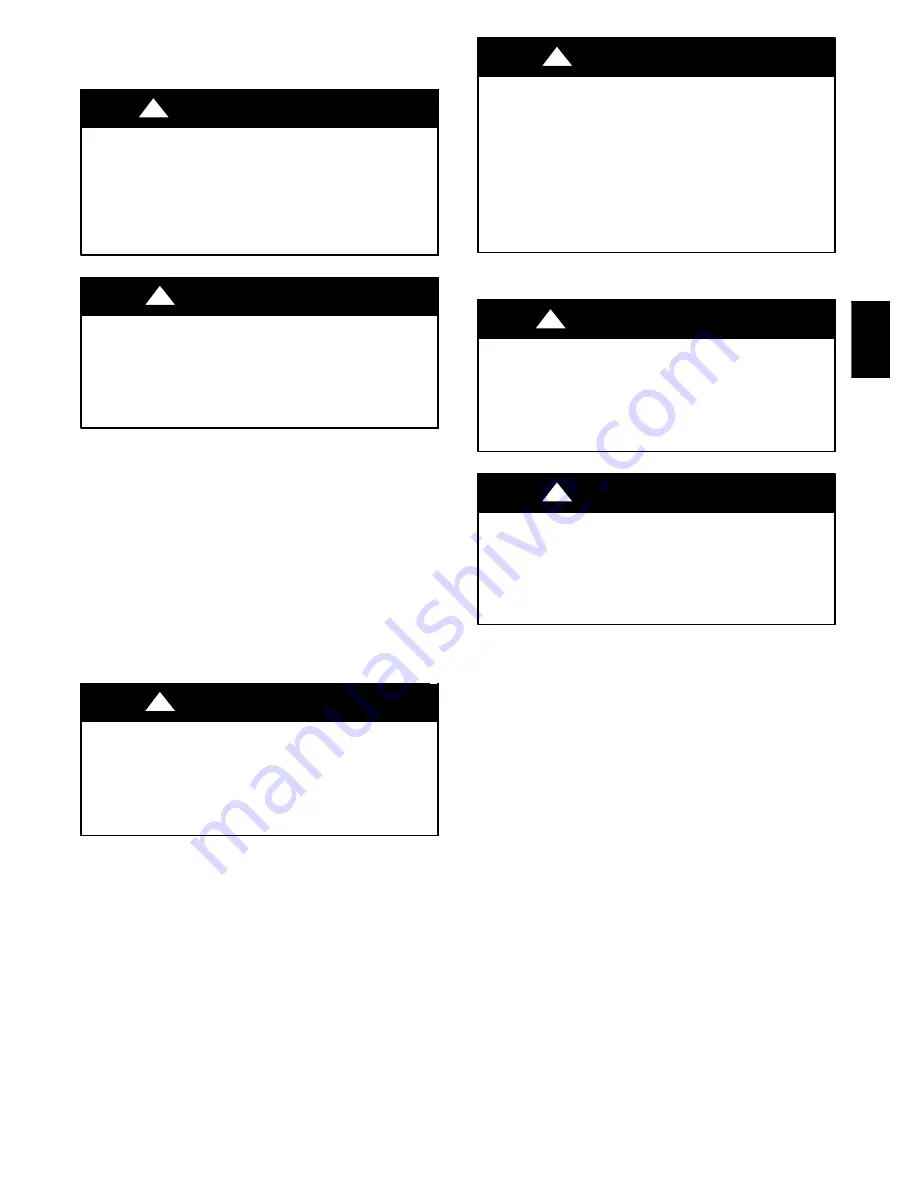
7
red and gray wires on Molex plug (pins 1 and 4) and blower motor
runs in low--speed operation. Also, 115 VAC is applied across pins
5 and 7, energizing interlock relay (see Fig. 12).
ELECTRICAL SHOCK HAZARD
Failure to follow this warning could result in personal injury
or death.
Before installing or servicing system, always turn off main
power to system. There may be more than 1 disconnect
switch.
!
WARNING
CUT HAZARD
Failure to follow this caution may result in personal injury.
Sheet metal parts may have sharp edges or burrs. Use care and
wear appropriate protective clothing and gloves when
handling parts.
CAUTION
!
CARE AND MAINTENANCE
Door
ERV door can be removed by unlatching brief case style latches,
then lifting door up and sliding it sideways. Door must be in place
and secured shut for proper operation.
Filter
Filters in ERV are washable and should be cleaned every 3 months.
Use a vacuum cleaner to remove heaviest portion of accumulated
dust, then wash in lukewarm water. Allow filter to completely dry
before reinstalling. A dirty air filter will cause excessive strain on
blower motor. Never operate unit without a filter.
In addition, regularly check and clean screens on exterior intake
and exhaust hoods when necessary.
UNIT COMPONENT DAMAGE HAZARD
Failure to follow this caution may result in unit component
damage.
DO NOT clean filters in a dishwasher and DO NOT dry them
with a heating appliance or permanent damage will result.
CAUTION
!
Blower Motor and Wheel
ERV blower motors are factory lubricated for life. Lubricating
bearings is not recommended. However, inspect and clean any
accumulated dirt and grease from blower motor and wheel
annually.
Cleaning the Core
ERV is equipped with a special energy recovery core which is
made out of paper and allows transfer of sensible and latent energy.
The core should always be only vacuumed every 3 months to
remove dust and dirt that could prevent transfer of energy.
NOTE
:
The core should only be serviced when outdoor
temperature is between 60
°
F and 75
°
F (16
°
C and 24
°
C) and it is
dry.
UNIT COMPONENT DAMAGE HAZARD
Failure to follow this caution may result in equipment
damage or improper operation.
DO NOT use water to clean core or damage will result. In
addition, before servicing or removing the core inspect the
edges to see if they appear soft (or slightly expanded). This
can be normal and due to moisture in the air. DO NOT
handle or service core until it is dry or air passages can
become damaged and/or closed.
CAUTION
!
TROUBLESHOOTING
ELECTRICAL SHOCK HAZARD
Failure to follow this warning could result in personal injury
or death.
Before installing or servicing system, always turn off main
power to system. There may be more than 1 disconnect switch.
!
WARNING
CUT HAZARD
Failure to follow this caution may result in personal injury.
Sheet metal parts may have sharp edges or burrs. Use care and
wear appropriate protective clothing and gloves when
handling parts.
CAUTION
!
NOTE
: Reference Table 6 Troubleshooting Chart
This can be a quick guide in resolving unit problems. It is also
recommended to review and understand Wall Control Board
Operation and Care and Maintenance sections before continuing.
There are 3 main parts to focus on when troubleshooting ERV unit:
1. Wall Control
2. Electronic control board
3. Blower motor
Wall Control
Use Table 1 to determine if wall control is operating correctly. Use
Fig. 7 and Table 5 to check control wire connections.
NOTE
: The electronic control board and wall control operate on
12 VDC.
Control Board
Electronic control board must have wall control attached before
unit will function properly. Also, configuration jumpers located on
control board must match configuration setup show in Fig. 12
under Jumper Table. In addition, outside air thermistor must be
connected to control board for it to operate properly. See Table 8,
Temperature -- vs -- Ohm Chart, for valid temperature range.
Blower Motor
The ERV blower motor operates on 115 VAC, with 2--speed
operation.
The easiest way to check blower speed operation is to use the wall
control and initiate a low--speed blower and high--speed blower
operation using intermittent mode (see Table 1).
ER
V

